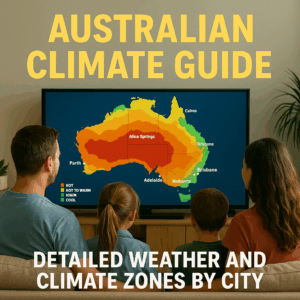Discover comprehensive qualification requirements for teachers migrating to Australia, including skills assessment, English proficiency, visa options, and registration processes.
Introduction
Australia’s education sector is actively seeking qualified teachers to address shortages across various disciplines and regions. For overseas educators, migrating to Australia offers promising career opportunities but requires meeting stringent teachers migration qualification requirements. This guide explores the essential steps, challenges, and tips for teachers aiming to migrate and work in Australia’s schools.
Understanding the Teacher Skills Assessment Process
The first and most critical step for migrating teachers is obtaining a positive skills assessment from the Australian Institute for Teaching and School Leadership (AITSL). This process verifies that your qualifications and teaching experience meet Australian standards.
Qualification Requirements
- A minimum of four years of tertiary education is required, typically:
- A four-year Bachelor of Education degree, or
- A three-year undergraduate degree in a relevant field plus a one-year postgraduate teaching qualification (such as a PGCE or PGDE).
- Completion of at least 45 days of supervised teaching practice is mandatory within your initial teacher education program.
- Your qualifications must be from a recognized institution equivalent to Australian standards.
Documentation and Verification
Applicants must provide detailed academic transcripts, evidence of supervised teaching practice, and verified employment references. The accuracy and completeness of these documents are crucial for a successful assessment.
Eligible Teaching Occupations
AITSL assesses various teaching categories, including:
- Early Childhood (Pre-Primary) Teacher
- Primary School Teacher
- Secondary School Teacher
- Special Needs Teacher (including Hearing and Sight Impaired)
- Special Education Teacher (nec)
Note: Primary School Teachers are listed on the Short-Term Skilled Occupation List (STSOL), which affects visa eligibility.
English Language Proficiency Requirements
English proficiency is a mandatory criterion for teacher migration. Teachers must demonstrate their ability to communicate effectively in English through recognized tests:
- IELTS Academic: Minimum scores of 7.0 in reading and writing, and 8.0 in speaking and listening.
- Occupational English Test (OET): Minimum grade B in all components.
- Pearson Test of English (PTE) Academic and TOEFL iBT are also accepted with equivalent scores.
Alternatively, completion of tertiary education in English may exempt applicants from testing.
Visa Options for Migrating Teachers
Australia offers several skilled migration visas suitable for teachers, each with specific eligibility requirements:
Subclass 189 – Skilled Independent Visa
- Permanent residency visa without employer sponsorship.
- Requires a minimum of 65 points on the General Skilled Migration points test.
- Primary School Teachers are not eligible under this visa subclass.
Subclass 190 – Skilled Nominated Visa
- Requires nomination by an Australian state or territory.
- Includes Primary School Teachers on the eligible occupation list.
- Adds 5 points to your migration points score.
Subclass 491 – Skilled Work Regional (Provisional) Visa
- For teachers willing to live and work in designated regional areas.
- Provides a pathway to permanent residency after three years.
- Also includes Primary School Teachers.
Subclass 186 – Employer Nomination Scheme
- Permanent residency via employer sponsorship.
- Requires at least three years of relevant work experience.
- Suitable for teachers with job offers from Australian employers.
Teacher Registration and Accreditation in Australia
After migration, teachers must register with the relevant state or territory teacher registration authority to legally teach in Australia. Registration requirements typically include:
- Verification of qualifications and positive skills assessment from AITSL.
- Proof of English proficiency.
- Criminal history and working with children checks.
- Commitment to ongoing professional development.
Each state has its own regulatory body, such as:
- NSW: NSW Education Standards Authority (NESA)
- Victoria: Victorian Institute of Teaching (VIT)
- Queensland: Queensland College of Teachers (QCT)
Common Challenges in Teacher Migration to Australia
Complex and Lengthy Skills Assessment
Preparing documentation for AITSL’s skills assessment can be time-consuming and requires attention to detail. Delays often occur due to incomplete or inconsistent paperwork.
English Language Test Difficulties
Many teachers find the required English proficiency tests challenging, especially the speaking and writing components.
Visa Eligibility Restrictions
Certain teaching occupations, particularly Primary School Teachers, have limited visa options and often require state nomination or regional commitments.
Adapting to Australian Curriculum and Classroom Culture
Overseas teachers may need bridging courses or mentoring to understand Australian teaching methods, curriculum standards, and classroom management practices.
Competition in Metropolitan Job Markets
While demand exists, competition for teaching positions in major cities is strong. Regional areas may offer better opportunities and incentives.
Practical Tips for Successful Teacher Migration
- Start Early: Begin skills assessment and documentation preparation well in advance.
- English Preparation: Invest in coaching and practice tests for IELTS or OET.
- Explore Regional Opportunities: Consider visas that encourage teaching in regional areas.
- Use Professional Support: Registered migration agents and AITSL resources can provide valuable guidance.
- Network: Engage with Australian teachers’ associations and online communities.
Migration Pathways and Points Test for Teachers
Teachers must also meet the General Skilled Migration points test, which considers:
- Age (maximum points for ages 25-32)
- English language proficiency
- Work experience (both overseas and Australian)
- Educational qualifications
- State or territory nomination (adds 5 points)
Achieving a high points score improves the chances of receiving an invitation to apply for a visa.
Teacher Visa Processing Times
Visa processing times vary by subclass and individual circumstances:
- Subclass 189: Typically 6-12 months.
- Subclass 190: 4-8 months with state nomination.
- Subclass 491: 8-12 months.
- Subclass 186: 8-14 months.
Delays often result from incomplete applications or additional document requests.
Navigate Your Migration
Migrating to Australia as a teacher offers rewarding career opportunities but requires careful preparation to meet teachers migration qualification requirements. Understanding the skills assessment process, English language standards, visa options, and registration procedures is essential. By following the practical tips and preparing thoroughly, overseas teachers can successfully navigate the migration journey and enjoy a fulfilling career in Australia’s education system.
Start your migration journey today by assessing your qualifications and exploring visa pathways tailored to your teaching profession.





